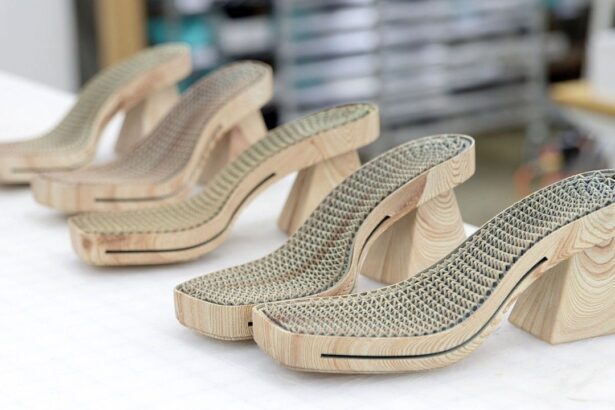Introduction — Why 3D Printing Is Reshaping Running Footwear
Traditional running shoes rely on EVA or PEBA foams with fixed-density formulas, forcing brands to compromise between cushioning, stability, responsiveness, and long-term durability. But 3D-printed midsoles change that equation. With programmable lattice structures, brands can control stiffness, rebound, and support in every zone of the foot.
This feature explores how 3D-printed midsoles work, why major brands like Adidas and Nike are investing heavily in them, and whether personalized running shoes are finally becoming mainstream.
What Exactly Is a 3D-Printed Midsole?
A 3D-printed midsole is a shoe midsole manufactured using additive manufacturing instead of traditional injection-molded foam. The most common material is TPU (thermoplastic polyurethane) because of its:
- High elasticity
- Fatigue resistance
- Potential recyclability
Core 3D Printing Technologies
- Digital Light Synthesis (DLS) — Used by Carbon for Adidas 4D midsoles; produces smooth, high-resolution lattices.
- Selective Laser Sintering (SLS) — Fuses TPU powder layer-by-layer; ideal for flexible, durable lattice structures.
- HP Multi Jet Fusion (MJF) — Produces consistent TPU parts with faster throughput, suitable for scaling.
Typical material names include BASF Elastollan TPU, Prodways TPU elastomers, and Carbon EPU materials.
How 3D-Printed Lattices Control Cushioning & Energy Return
Lattices replace foam with engineered geometry. Instead of relying on chemical properties, designers fine-tune performance by adjusting:
- Wall thickness
- Cell size
- Density gradients
- Geometry transitions
Common Lattice Types
- Gyroid — Smooth compression, good for all-round cushioning.
- Diamond — High stability with predictable deformation.
- Bowtie — Soft and compliant, ideal for heel cushioning.
- FWD Cell (Adidas) — Directs compression forward to reduce braking forces.
Example: Adidas 4DFWD reduces braking force by guiding the foot forward during impact, improving running efficiency.
Case Studies — Who’s Already Using 3D-Printed Midsoles?
Adidas (4D Series / 4DFWD)
- Uses Carbon’s DLS technology.
- Lattice tested to reduce braking forces by ~15%.
- One of the first large-scale 3D-printed running products.
Nike
- Early prototypes under Project Nectar.
- Partnership with Zellerfeld for fully 3D-printed shoes.
- Flyprint uppers show Nike’s push toward personalized fit.
- Experiments pairing printed chassis with Air units.
Prodways
- TPU elastomers with 300%+ elongation.
- Suitable for variable-density midsoles and outsoles.
- Strong fatigue resistance ideal for performance footwear.
These brands show that 3D printing is not a fringe experiment — it’s becoming a central pillar of next-generation footwear innovation.
Manufacturing Realities — Cost, Speed & Durability
Cost
- Injection molding: Expensive tooling but cheap per pair.
- 3D printing: No tooling needed but higher cost per unit.
Speed & Scalability
- MJF and SLS scale better for volume.
- DLS delivers unmatched precision but prints fewer units per tray.
Durability
TPU lattices often outlast traditional foams because they resist compression set and maintain rebound longer.
Common use cases for 3D-printed midsoles:
- Elite athlete prototypes
- Gait-personalized trial builds
- Premium limited-release footwear
Personalization — The True Promise of 3D-Printed Footwear
3D printing enables midsoles tailored to individual biomechanics.
Tools Used for Gait Analysis
- Smartphone or camera-based foot scans
- Pressure-sensing treadmills
- Smartwatch gait data
Personalization Pipeline
- Scan — Capture gait and foot profile.
- CAD Mapping — Convert data into midsole zones.
- Lattice Tuning — Adjust stiffness, density, geometry.
- Print — Produce the custom midsole.
- Test & Refine — Runner tries and adjusts as needed.
Customization Options
- Pronation control
- Arch support tuning
- Asymmetric left/right lattice structures
- Race-specific forefoot stiffness
This is the core reason 3D-printed midsoles are gaining hype: true customization is finally possible.
Testing & Validation — Do These Midsoles Actually Work?
Brands validate performance through:
- Lab testing: Compression, rebound, energy return, fatigue.
- Real-runner testing: Pressure sensors, force plates, gait labs.
Scientific Backbone — XCT + DVC Studies
X-ray Computed Tomography (XCT) combined with Digital Volume Correlation (DVC) allows researchers to see how internal structures deform under load.
A key study demonstrated that internal stiffeners behave differently than surface geometry suggests — meaning midsole performance must be validated voxel-by-voxel.
This “strain-driven design” philosophy is foundational for tuning 3D-printed lattices.
Sustainability — Are 3D-Printed Shoes Greener?
Benefits
- Zero-waste production (print only what you need)
- No molds = no tooling waste
- On-demand manufacturing reduces inventory problems
- Potential for fully recyclable, single-material shoes
Challenges
- Energy-intensive printing processes
- Multi-density lattices are harder to recycle
The Road Ahead
- Circular TPU programs
- Fully disassemblable single-material shoes
- Localized micro-factories for on-demand printing
Buying Guide — What Runners Should Look For
For Consumers
- Durability data
- Return/warranty policies
- Heel/midfoot/forefoot stiffness tuning details
- Wide or narrow fit options
- Gait-personalization availability
For Small Footwear Brands
- 3D printing is ideal for limited runs or testing.
- Best partners: Carbon (DLS), BASF, Prodways, or MJF print bureaus.
- Validate prototypes through fatigue, energy return, and pressure testing.
The Future — AI-Driven Lattices & Instant Manufacturing
Next-gen innovations include:
- AI-generated lattices tailored to your biomechanics
- In-store print-on-demand stations
- Zero break-in custom race shoes
- Personalized stiffness profiles for each foot
- Lattices updated continuously from smartwatch data
This will redefine how the footwear industry designs, manufactures, and delivers shoes.
Conclusion — The Next Step in Performance Footwear
3D-printed midsoles offer unmatched control over cushioning, stability, and personalization. And as biomechanics data, lattice engineering, and validation tools like XCT/DVC come together, the future of running footwear looks increasingly custom, efficient, and sustainable.
Sources & further reading:
- Nike 3D printing initiatives and Zellerfeld collaborations (Air Max 1000 / Project Nectar). The Verge
- Ganju et al., Deformation mechanisms in marathon running shoes elucidated by X-ray micro-computed tomography and digital volume correlation analysis. Scientific Reports / Nature. Nature
- Adidas 4DFWD product & data pages (Carbon DLS / FWD Cell). adidas News+1
- Prodways TPU & developments in 3D printed footwear. TCT+1
- BASF Elastollan® TPU for footwear applications. plastics-rubber.basf.com+1




